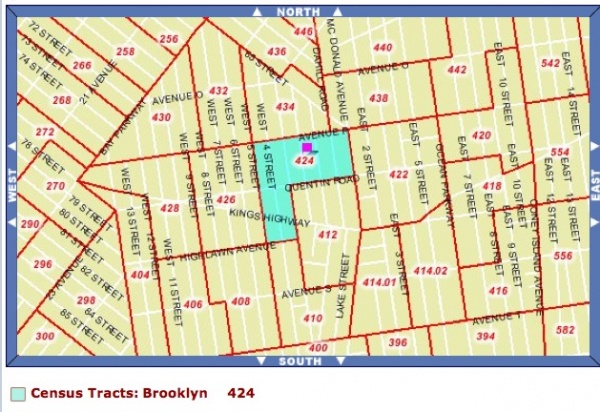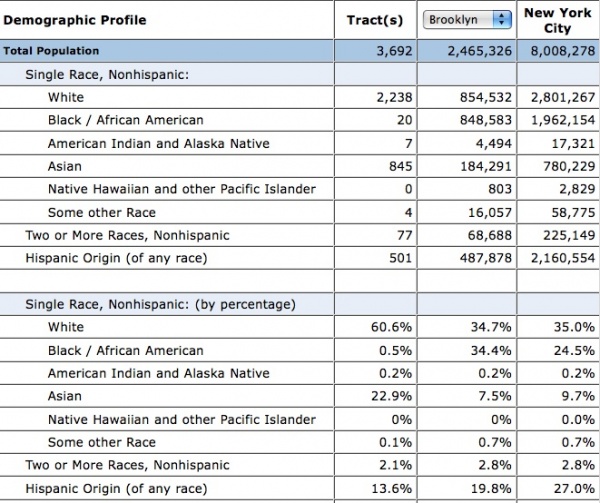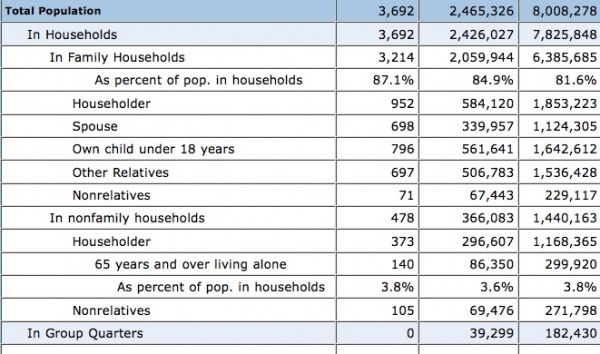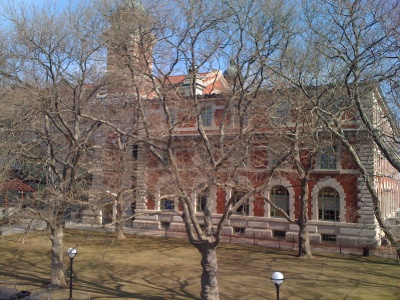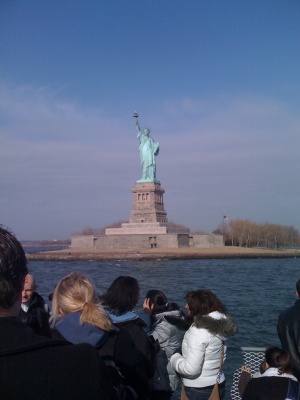From The Peopling of New York City
Christian Iezzi
Contents |
About Me
My name is Christian Iezzi and I am proud to be a Macaulay Honors Scholar at Baruch. I am an 18-year old American with Italian roots and am very proud of both cultures. I was born in Manhattan, New York in 1990 and have lived my whole life in Brooklyn. After attending a private Catholic elementary school for the first 9 years of my education, I went to another private Catholic institution named Xaverian High School. I thoroughly enjoyed my time as a high school student and I really hope that College can be as much fun. I have a few very close friends and many acquaintances and I have always been very close with my family. Family and friends were always central to my life, which probably owes, in no small part, to my Italian heritage. I grew up understanding that family is more important than anything and that good friends are hard to find. Academics are also a big part of my life. I always enjoyed my studies and continue to enjoy them today. I like learning new things and I relish a mental challenge. These things are what make me who I am and I am very proud to say so.
Ideal Community
My ideal community would be one where everyone had a working relationship with their neighbors. People would be anxious to help each other and all would have a stake in the well being of others. I would want to have a group that was unencumbered by trivial matters and focused on the true goal of happiness. Money would not be an object and material goods would lose their values. Happiness can only be achieved when everyone lives in harmony with each other and can go about their lives in the knowledge that if they need help it is readily available. My ideal community would essentially be a huge support system in which neighbors could rely and depend upon each other. I believe that I have encountered this ideal community at my old high school of Xaverian. I came to realize how those who cared about the school came to find that there was a true family there. I found friends and faculty that would do anything to help me out and vice-versa. We developed a real bond and established life-long friendships. We were focused on the big picture and while there were some trivialities they always passed. I still marvel at the fact that I have the same feeling of a community there even now when I return. I hope to find another community like this ideal one.
Immigration Film Clip
My film clip was a scene from the Godfather Part II. This scene shows Vito Andolini arriving in Ellis Island by himself. He has no family members with him. He is escaping trouble in his hometown of Corleone, Sicily. Vito's father, Antonio, was killed after dealings with the Don Ciccio the local boss. Vito's older brother, Paolo, swore revenge against Don Ciccio and was killed for it. His mother goes to the Don to plead for the safety of Vito, her youngest son. He does not agree and she holds a knife to the throat of the Don to allow Vito to escape. He does so and she is murdered by one of the Don's bodyguards. Vito is eventually able to board a ship to America and undergoes the rigorous Ellis Island screening. His name is changed by the officials from Vito Andolini to Vito Corleone. It is discovered that he has smallpox and is quarantined. This is how the scene ends as we seen the future Don Corleone arrive in America.
Census Tract
My neighborhood in Bensonhurst, Brooklyn is a place that reveals links to the past as well as glimpses of the future. As is show in these graphs, there is a strong contingent of white citizens in the region. This hearkens back to the earlier days when the area was an Italian stronghold (hence the presence of my family). There is also a significant amount of Asians now in this area. This accurately shows the new wave of people who are coming into the United States. The Asian contingent is growing and becoming very influential in the community.
Class Notes
1/30/09 Old Immigration vs. new Immigration
Saturation. Mass Immigration= 1680-1920 1960 - Change in Immigration law
People migrated for + values, resources, pull factors.
The trails that were followed by the Native Americans had a prior history.
These trails were Buffalo trails, hence Buffalo, New York.
Ocean currents and wind were natural factors that most likely led to the early settling of New York.
Economic, people, weather, fish, and a homey feeling were also contributing factors to the settling and migration to New York.
Social reasons for coming to NYC: • People similar to other people • Education because of major universities of higher education • Entertainment (Museums, art, theater) • Shopping Mecca • Lifestyle • Food
Push Factors (from your original home): • Poverty • Religious Persecution • Boredom • Politics • European Wars • Great Depression
3/13/09
Looking over our individual wikis.
Discussing our class trips to Ellis Island and the African Burial Ground.
Discussing our class wiki: Structure (1) National Park Service: Rolanda, Alice, Yura, Margot
-Ellis Island -African Burial Ground -Tenement Museum
(2) Research: Alisa, Andrew, Duke
-Census Tracts -Books/readings
(3) Media: Jasper, Daniel, Andrey
-film clips/movies -student videos -newspaper
(4)Our class: Emily, Anna, Christian, Vincent
-goals -bios
Methods: -Design -Visual
-video -photography
-Text/editing
3/27/09
Science- Is
Ideaology- ought to be
Berger 1990's (Journalist) Writing for accuracy and accessibility Foner- Journalistic less formal (College level) Glazer- Political Scientist Moynahan- Sociologist 5 groups of Glazer & Moynahan Irish, Italians, Jews, African Americans, Puerto Ricans Immigration scheme has changed (more woman immigrants)
May 1 2009 Inventory Images – photography still images, moving images Sample surveys Whole material – selecting Field trips There to here essays Books Census data Mapping
Class wiki – DATE MAY 14 @ 6-8 PM at MHC 1) Intro – Vinny Group Rep – Vinny - handout - introduce the field trips → introduce families (stereotypical family stories) Italians (Ellis Island) – Valentino Irish (Tenement Museum) – Calaghan African (African Burial Ground) – Senkofa
2) NPS – Margot’s group a. Italians (Ellis Island/Castle) – Valentino b. Irish (Tenement Museum) – Calahan c. African (African Burial Ground) – Senkofa
3) Research – Alisa’s group a. Stats b. Graphs c. Books – bring in
4) Media – Danny’s group a. New immigration video
Odd vital jobs Closing – Daniel
Overall Design – Emily, Anna - Navigation/easy clicking - aesthetics
Proofread – Christian
http://macaulay.cuny.edu/seminars/krase09/index.php/Krase%27s_Klass
Send Anna all media to form the structure and design of the wiki.
Field Trip Notes
Ellis Island was a very educational experience. I was successful in finding names of people who I believe to be the members of my family who came to America during the early 1900's. The most likely candidate was Francesco Iezzi who was probably someone referred to as "Uncle Frankie" by older family members. I found the idea that there were thousands of people crammed into this building to be overwhelming and more than slightly sad. There is something to be said for the courage of these immigrants who were willing to risk so much in order to fulfill the American Dream. We were able to thoroughly explore the facilities and received much in the way of information from our guide.
The African Burial Ground was a place that I had passed countless times but never knew what it was. I had no clue about the vast history that was contained next to a corporate building in lower Manhattan. The National Park Service was very knowledgeable about the site and willing to answer any of our questions. I was very impressed by how much symbolism was contained in the small area dedicated to the memory of the African slaves. I was particularly struck by the symbolism of the structure in the courtyard, which represented one of the ships that brought the slaves to America. was a little strange going to a historically significant site in the middle of a functioning office office building. It was unique to say the least. It was also at times frustrating to deal with the metal detector that absolutely REFUSED to work.
The Lower East Side Tenement Museum was another site that I had passed countless times and never knew what it was. I was particularly intrigued by this area because my Italian ancestors probably found themselves in similar surroundings. I was really shocked at how incredibly cramped the conditions were and how desperate the situation was. Our guide was very thorough in his descriptions and analysis. We got to experience first-hand the plight of the Moore Family and hear about their real story. The fact that this family actually lived here made the experience all the more meaningful because it was not just a representation of the home but the real historically accurate location. The presentation was also very good as there was a real attempt made to make the location look like it did back then make the I thoroughly enjoyed this trip as it brought to life the real immigrant struggle.
Midterm
1. Describe, discuss, and give examples from the assigned readings and class notes regarding the Theories and ideologies of im/migrant adjustment to American Society
When immigrants first came to this country each group had their own issues to deal with in terms of acceptance and assimilation. Each group faced their own struggles and had problems adapting to American culture. Whether they came from Western Europe or from Asia, there were very few exceptions to this rule. Two very influential groups that had a lot of trouble in the early 1900’s were the Jews and the Italians. Both of these groups were discriminated against and had to find their own ways to grow into American culture. The Jewish people had a slightly easier time assimilating to American ways while the Italians remained stubborn and more set. The Italian people came to this country heavily in the early 1900’s. Nancy Foner mentions in her book, From Ellis Island to JFK, that the Italians faced a tough road to adjusting in America because of their lack of and relative disdain for education. Children were not urged to stay in school and get good grades. They were ushered into the work world by their parents at an early age and were expected to contribute to the economic well being of the household. “Italian Parents were more likely than Russian Jews to keep their children out of school to help with housework to earn money.” (195) This caused them to be viewed as poor, second-class citizens. This educational problem is also mentioned in the book, Beyond the Melting Pot by Nathan Glazer and Daniel Moynanhan. They make reference to the fact that education was not something that the South Italian peasant could afford to consider. “Education was for a cultural style of style of life and professions the peasants could never aspire to.” (199) The Italians did also have very strong family values. They were, and still are, a closely-knit society that places family above all else. This can insulate them from society to a certain degree when family values were taken to an extreme. Glazer and Moynahan mention the Italian mindset that, “One should not trust strangers, and may advance one’s interest at the cost of strangers.” This is not exactly a quick route to assimilation. As Joseph Berger mentions in his book, The World in a City, when referring t the original Italian immigrants, “those pioneers spoke Italian, cooked Italian, married Italian, and made their families the core around which their lives revolved.” (199) Italians overall did not really assimilate quickly to American culture and kept much of their old customs. The Jews had their own problems when coming to America. They were not looked upon kindly when arriving from their usually Eastern European birthplaces. Nancy Foner mentions this prejudice against Jews by using a quote by Edward A. Ross that says that lower class eastern Europen Jews are “moral cripples, their souls warped and dwarfed by Iron circumstance….Life amid a bigoted and hostile population has left them aloof and thick-skinned.” (145) The major quality that made Jews more acceptable in the eyes of the average white, American was the value that they placed on education. Glazer and Moynahan say that, “Eastern European Jews showed almost from the beginning of their arrival in this country a passion for education that was unique in American history.” (155) They were able to assimilate better because of this quality present in them. There was more of a desire for education and a need to advance in society. This assimilation to American culture helped their cause greatly. Their cultural values happened to blend very well with the American way of doing things and they better adjusted to American life. Both the Italian and Jewish immigrants faced hardships when coming to America. The Italians were more insular and not concerned with anyone but their own. The Jews were not viewed in a favorable light either but education helped them quickly adjust. Each group had their own ideologies of how to adapt. In my opinion, the Italians took a much more stubborn route, while the Jews were able to more easily conform despite the prejudices against them. They are two vital groups in the history of America
2. Describe, discuss, and give examples from the assigned readings and class notes regarding the question: Is attaining the status of “whiteness” the threshold of being an American?
The notion that being white means truly being an American can be found throughout American history. America was founded by white settlers and dominated by them throughout its early history. The major group of non-whites that were present in early America was African slaves. As immigration began to peak in the early 1900’s, new comers to the country were rejected by those already here, for fear of poisoning the culture. Even groups like the Jews and the Italians who today are unquestionably viewed as white citizens had to establish that over time. So in this context being “white” is actually viewed as a euphemism for being a true American. When the Italians and the Jews first came here they were not treated as well as the white citizens who were already here were. These white citizens mainly included, WASP’s (White Anglo-Saxon Protestants). As Nancy Foner mentions in her work, From Ellis Island to JFK, “Contemporary historians have coined phrases like ‘in-between peoples’, ‘probationary whites’ and ‘not-yet white ethics’ to describe Jews and Italians’ ambiguous racial status.” (143) She mentions that the Italians were viewed as being more towards the darker pigmentation of skin. As she says, “as late as the 1930’s, a second generation Italian in New Haven told a researcher that ‘our skin gives us away… It’s dark and oily.’” (147) Due to this issue many Italians were viewed as being more like African Americans. It must be observed that African Americans at this time were not readily accepted as members of society. The civil rights movement had not yet happened and slavery had only ended a few decades before. This issue of classifying new European immigrants as not white also extended to the Jewish people as well. Nancy Foner remarks on this group as well by saying, “Eastern Europeans were also racialized in the popular mind, according to Barrett and Roediger: ‘While racist jokes mocked the black servant who thought her child, fathered by a Chinese man, would be a Jew, racist folklore held that Jews, inside out, were niggers.’” (147) This continued discrimination against Eastern European immigrants confirmed the early concept that those who were accepted by the early American culture were those who were viewed as being white citizens. Anyone who was a little off or did not look the part was not treated as a full American. This is certainly a racist viewpoint and is expressed even in today’s society. After Africans emerged from slavery they were still not treated as equals. This did not come until the 1960’s and the Civil Rights movement. During the early 1900’s Africans were certainly still not valued members of society. If one was viewed as being similar to an African this was viewed as an insult and a barrier to social advancement. This is what Italians and Jews had to deal with because even thought they did not hail from the shores of Africa they were still treated with the same amount of prejudice, so they might as well have been descended from African slaves. The concept of race is a powerful one in determining social standing. It is certainly a valid statement to make that in the early days of immigration being white was the threshold for being an American. Today this is less pronounced but the remnants are still there. This concept was applied to influential groups such as the Jews and the Italians early in the days of immigration. Foner says that, “A common belief was that they belonged to inferior “mongrel” races that were polluting the country’s Anglo-Saxon or Nordic stock.” (143) This implies favoritism in American culture towards the fully white citizens that started the country. So it is true that at the time true Americans were those who were considered to be white. Even groups like the Jews and the Italians, who are today always considered to be white at this time were not seen as such and therefore discriminated against.
From There To Here Essay
The story of the Iezzi and Striano family begins in Italy. Naples and Abbruzia to be specific. Three great-grandparents, Francesco Iezzi, Angelina Striano, and Salvatore Striano came from Naples and Angelina Iezzi came from Abbruzia. There was a powerful sense of community among both families. They were a part of a much larger group of citizens living in the same towns who all tried to support each other. Their problems came mostly from economic hardships and from the desire to embrace the new world. They all eked out modest livings, whether it was Angelina making wedding dresses or Salvatore shining shoes. There was a common sentiment amongst both couples, getting to America was at the top of their priority list. They wanted to establish a better life for themselves and they knew that they could not do so in their beloved Italia. My father's grandparents came first and probably arrived during the peak of Ellis Island's popularity as a port of entry into the U.S. My mother's grandparents, to the best of our knowledge, came a little later probably through Ellis Island but past it's peak years. Both the Striano's and the Iezzi's came with one child, their oldest sons. Frank Iezzi Jr. and Louis Striano were both born in Italy and arrived here in their very early childhoods. Fittingly enough both families ended started out in the Lower East Side of Manhattan.
Not much is known about either family and their relatively short stints in the Lower East Side in what was the beginnings of Little Italy. It is generally assumed that each family was there for approximately a year. They probably lived in a tenement house similar to the Moore family. The Iezzi's managed to save up money over this time with Francesco working in the construction industry of New York, and they eventually had enough to buy a house in Flushing, Queens. (The exact address has been lost in the annals of our history) Here they continued to expand their family eventually having Lucy, Millie, and my grandfather, Rudy. They also briefly had Anne whom they lost as a young girl. The Striano's on the other hand followed a little bit of a different path. Salvatore continued to ply his trade as a cobbler and Angelina continued to sew wedding dresses. They too, managed to save a nice amount of money and buy a nice brownstone on 16th street and 5th Avenue. Sal also had enough funds to set up his own business on 9th street and 5th Avenue. It was both a shoe-shine and shoe-maker industry which did quite well in what was a very busy area. The Strianos also began to expand their families, after the Italy born Louis they had Alphonso, Mary, Francis, Jeanie, and my grandmother Jeanette. Alphonso died a young man but the rest of the children continued to thrive.
After these families established themselves in New York City their children began to thrive. They did not let the fact that they were children of Italian immigrants hinder their progress in any way. Louis Striano started as a runner on Wall Street, proceeded to put himself through college, worked his way up and eventually became an international accountant for the U.S. Government. Mary was a waitress in some high class restaurants and invested her money wisely and bought 3 houses of her own. Jeanie owned 2 dry cleaning stores. Frank Iezzi Jr. became a college professor and Lucy owned her own restaurant. Both families were very successful and had real entrepreneurial ambitions. There was always a stress placed on making a mark in the world. More importantly it was making a mark on your own. Self-reliance and self-motivation were central to the ideologies of both families. Everyone had a drive to them because they saw their parents come here with virtually nothing and make a great life for themselves. My parents have passed this same drive on to my sister, and my brother and me. We all have a good deal of ambition and plan on using it.
The two people who have a direct bearing on my life are Rudy Iezzi and Jeanette Striano. Not much is know about my grandfather's early life but I do know that Rudy worked for an aviation corporation and eventually met his wife Theresa and had my father Michael. They moved out to Long Island and lived a nice quiet suburban life. My grandmother Jeanette, whose life I know considerably more about, worked at a French designer clothing outlet as a saleswoman. She also grew up under her very strict old school parents. Sal and Angelina were both very traditional in their ways and they had very clear ideas regarding what an appropriate male suitor for my grandmother was. They introduced him to a nice man named Jimmy Russo but she did not really love him. She wound up marrying a nice man named Dominic who worked as a roofer, which upset her mother for a few months. He bought the family a house on 61st Street between 16th and 17th avenue. They then had my mother Arlene. My mother and my father eventually met to have me and my siblings. We still live in Brooklyn to this day within a few miles of where my great-grandparents first came to experience the new world. I feel very honored to be the descendants of these extraordinary people. I realize that without their pioneering spirit my life would probably not exist. I am proud to claim Italian heritage and I recognize the struggles that this group encountered when first coming to America. I extremely grateful to them because of this and I give them my vow that I will live up to the legacy they have built.

